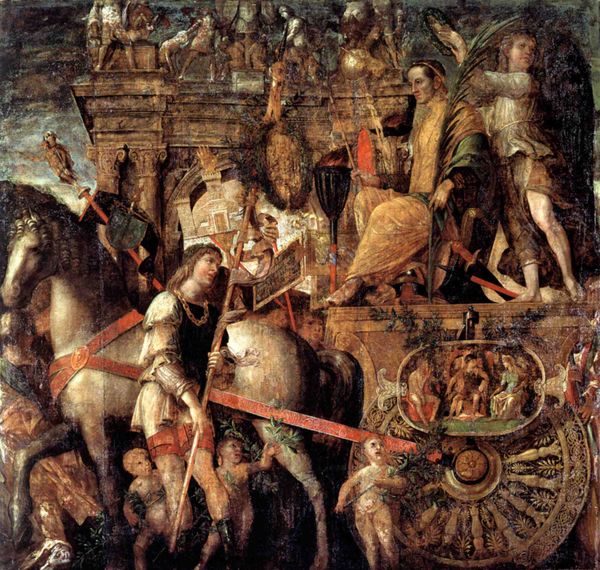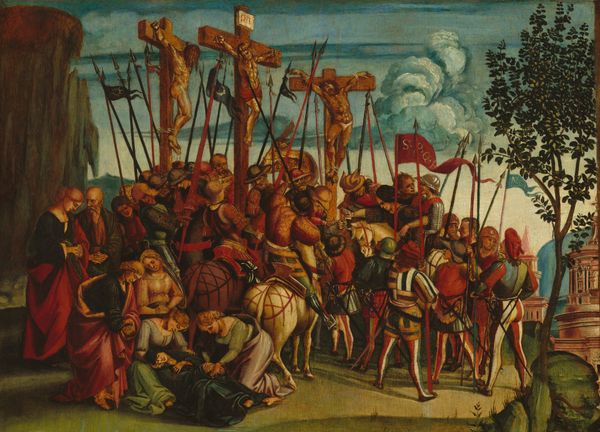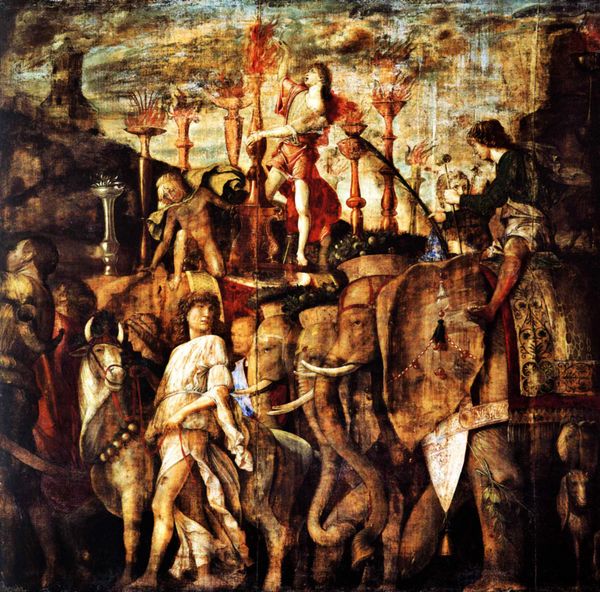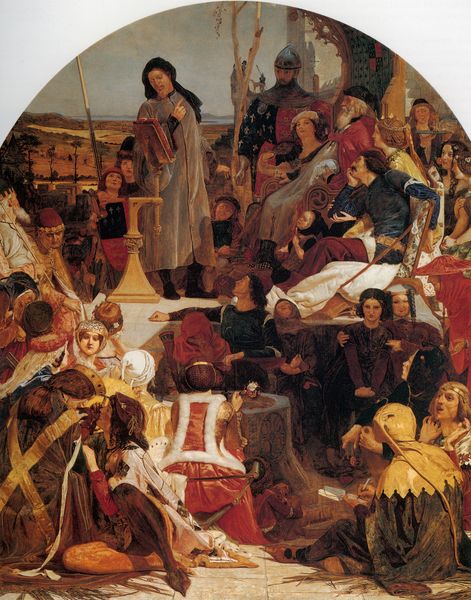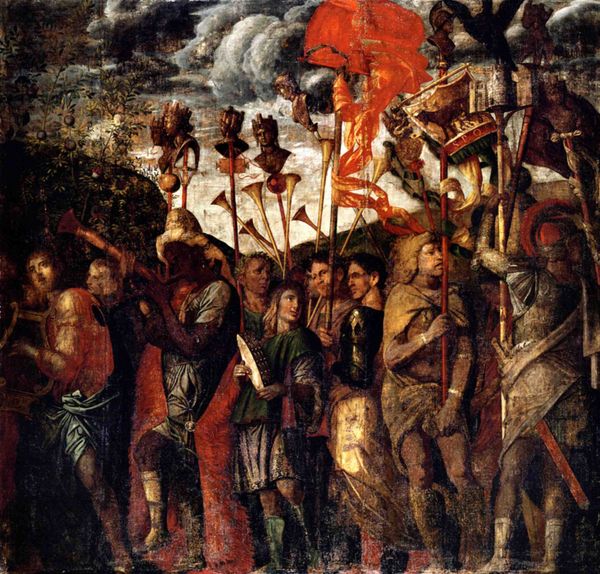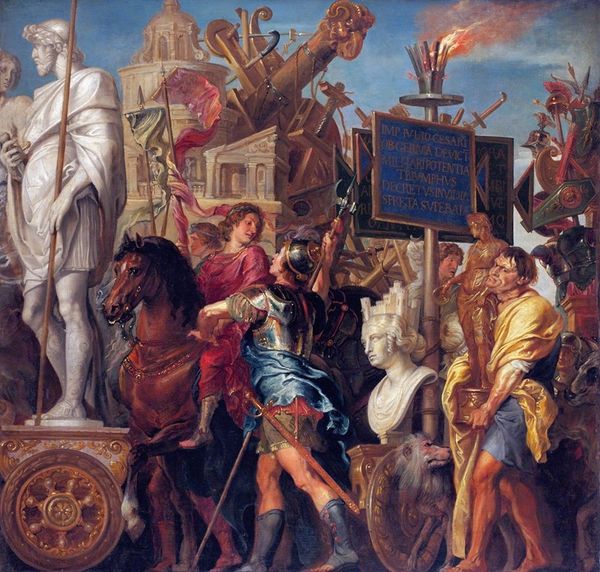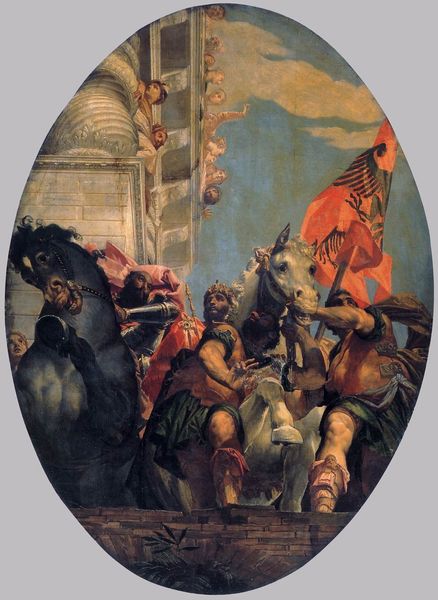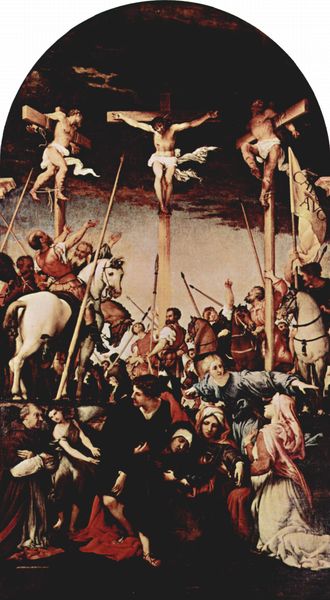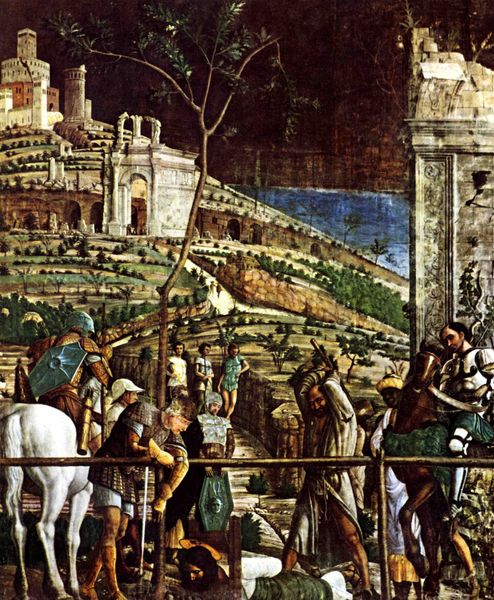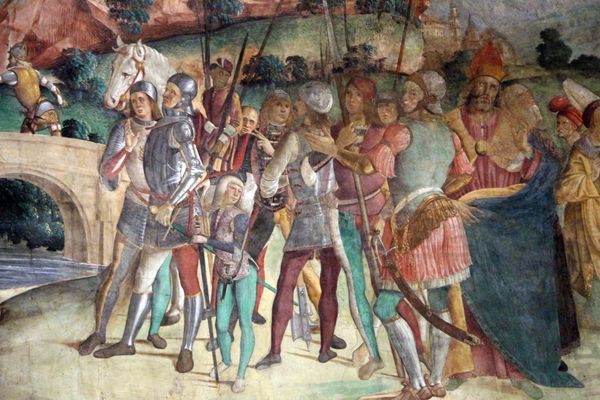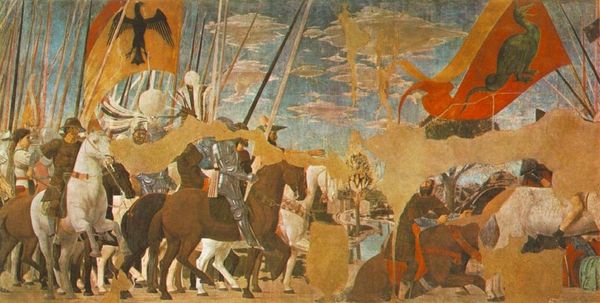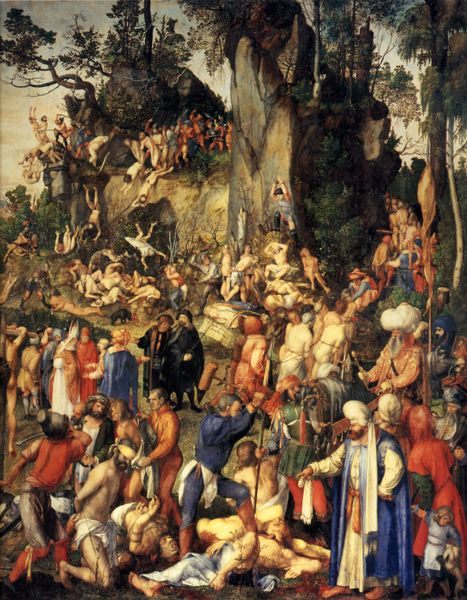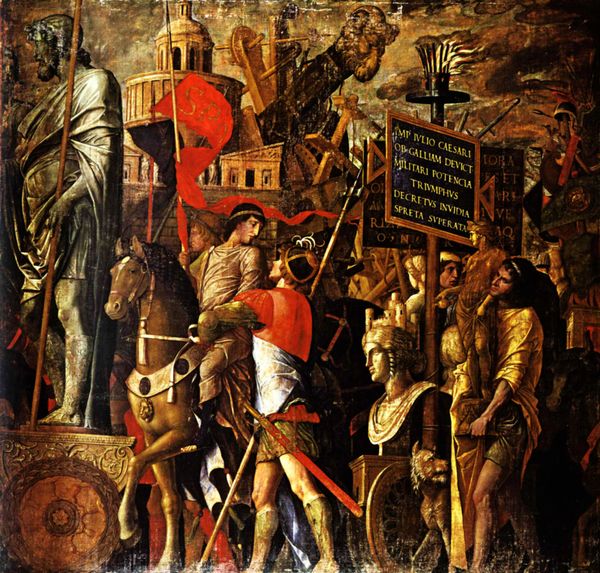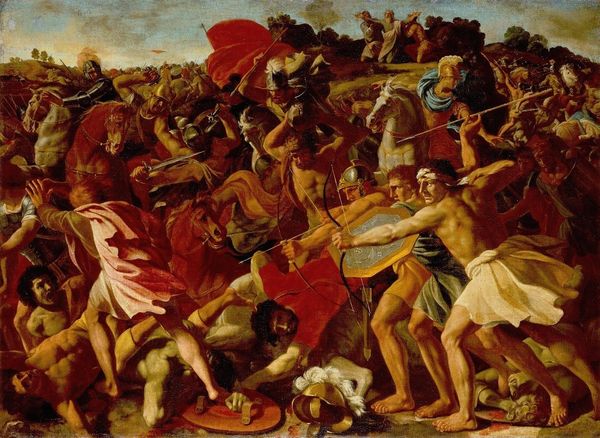
tempera, painting
#
portrait
#
narrative-art
#
tempera
#
painting
#
soldier
#
group-portraits
#
horse
#
mythology
#
painting painterly
#
history-painting
#
italian-renaissance
Copyright: Public domain
Editor: So here we have Andrea Mantegna’s *Triumphs of Caesar*, from around 1506, created using tempera. There's so much visual information here, almost overwhelming, but what really strikes me is the sheer quantity of materials depicted – armor, vessels, cloth. How do you even begin to interpret something so dense? Curator: The key is in examining the materials and their societal function. This isn't simply about celebrating Caesar; it’s about displaying power through the accumulation and control of resources. Think about the labor involved: the mining of metals, the crafting of armor, the weaving of textiles. Each element signifies not only Roman wealth, but also Roman dominance through material extraction and production. Editor: That’s a great point – thinking about the actual labor, rather than just the final "triumph." Does the choice of tempera itself hold any significance? Curator: Absolutely. Tempera requires a specific kind of preparation and layering. The artist is not just applying color, but engaging in a methodical process, similar to the structuring of Roman society itself, regimented and carefully constructed. Also, consider the cost of the pigments; they contribute to the sense of luxury and controlled expense, doesn’t it? Editor: It does. I hadn’t thought about the economic value embedded in the materials themselves, both within the painting and those it depicts. So it’s almost like Mantegna is not just showing us a triumph, but also giving us a visual inventory of Roman power. Curator: Precisely. By focusing on the materials and processes, we see how the construction of power is intimately linked to labor, resource extraction, and ultimately, consumption. These grand narratives often overshadow those essential aspects of production. Editor: This has given me a whole new perspective; shifting the focus from just the subject matter to the making of the work itself. Curator: Exactly, and by exploring the historical context of material production, we gain a far richer appreciation.
Comments
No comments
Be the first to comment and join the conversation on the ultimate creative platform.
